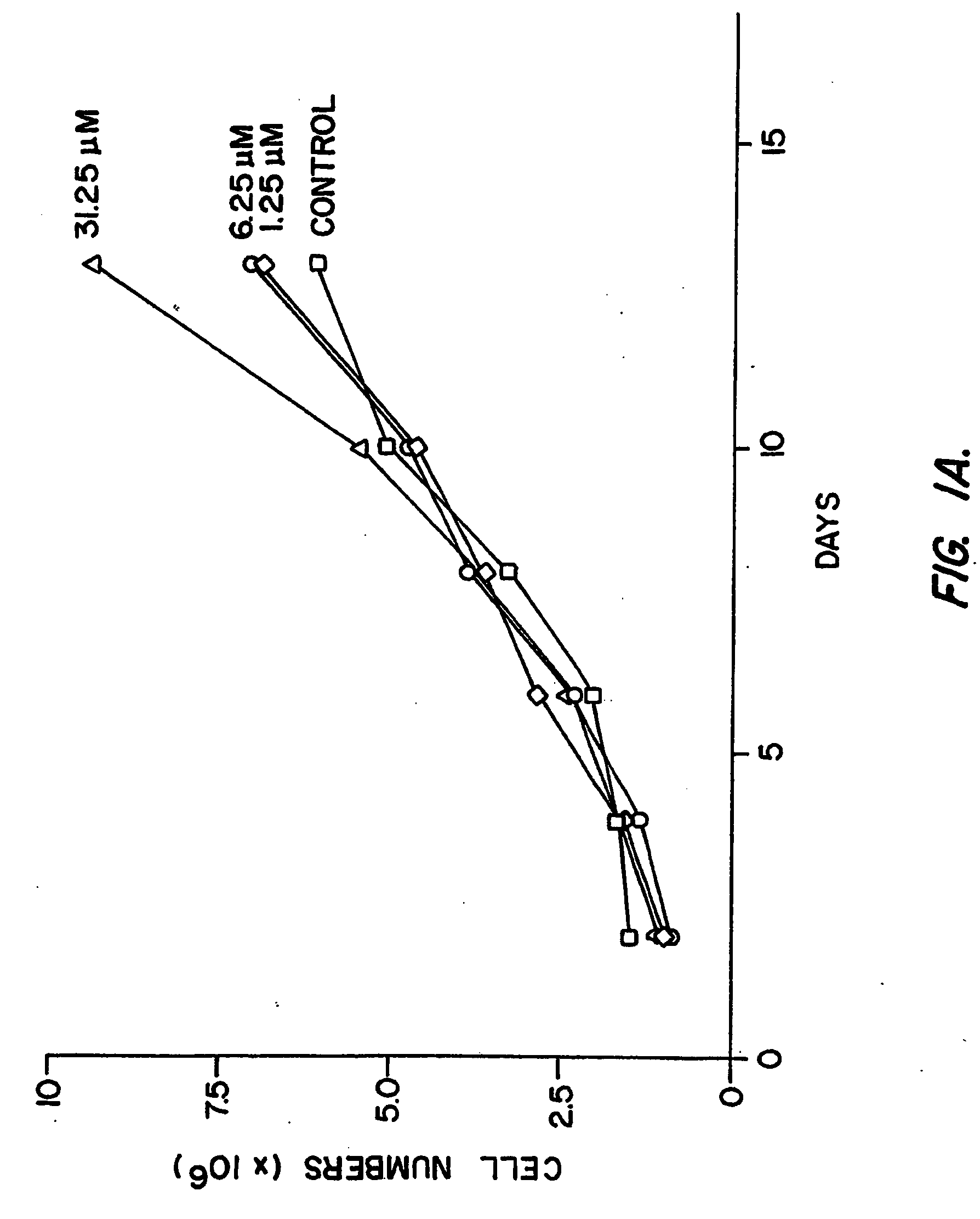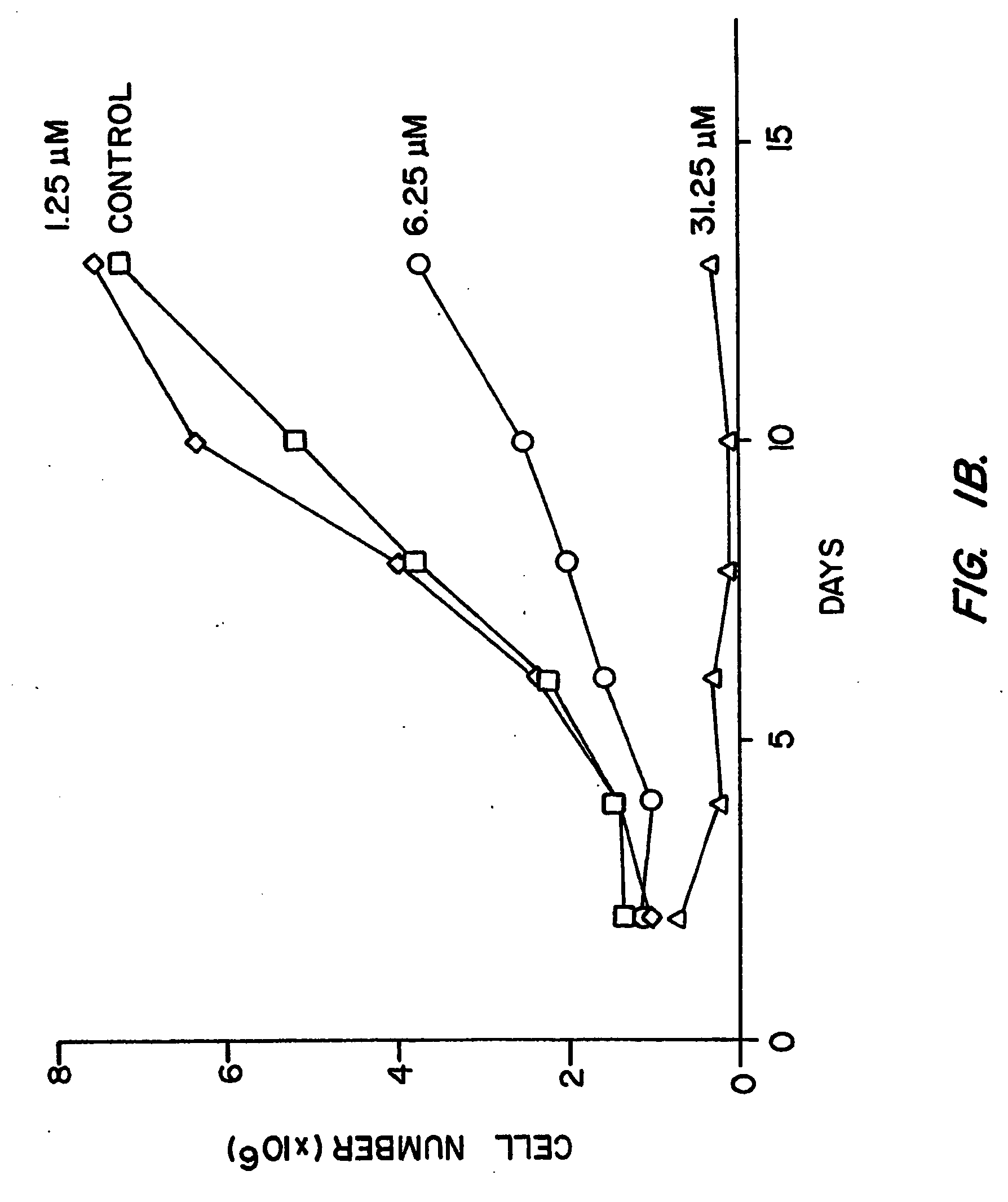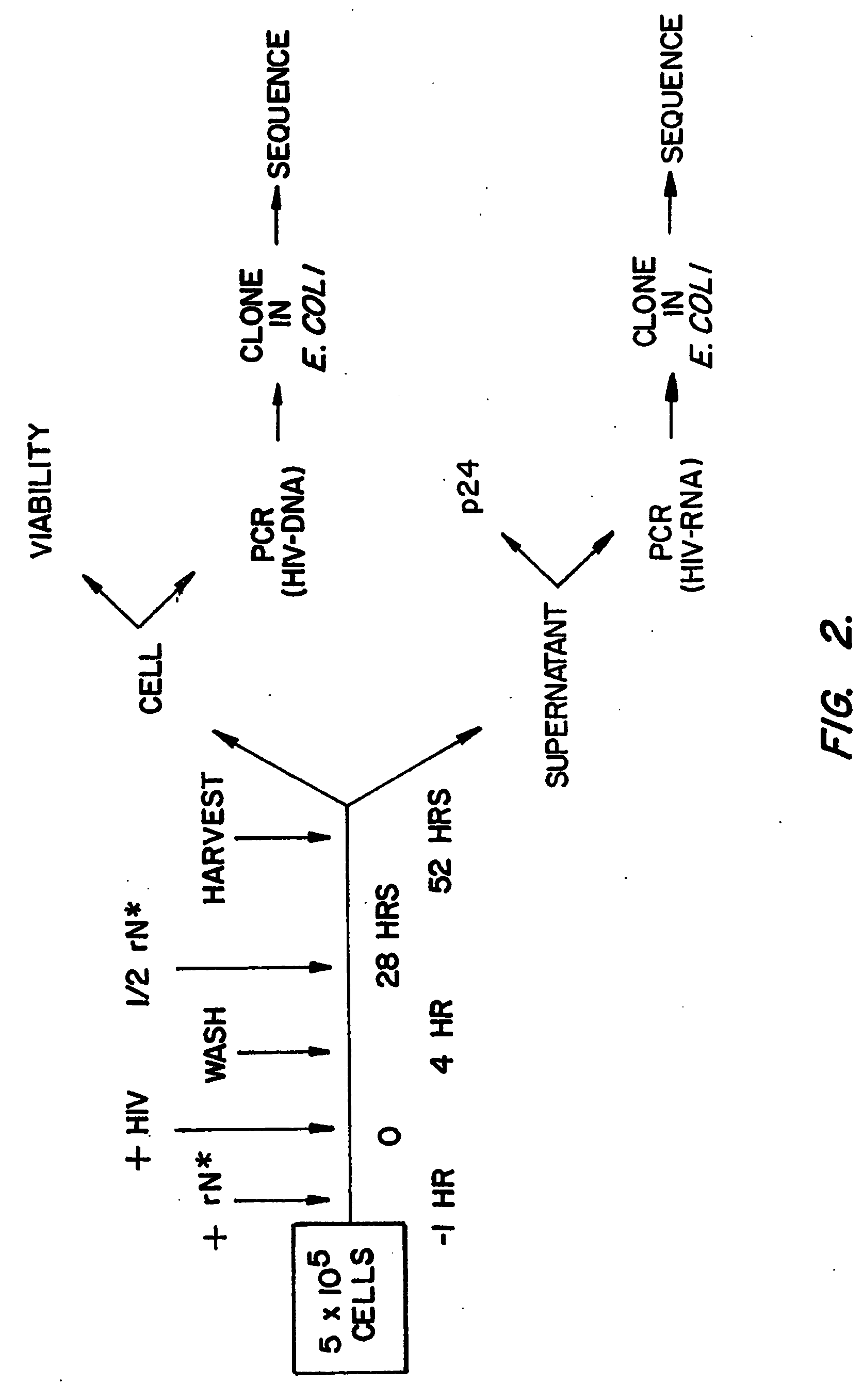Induction of viral mutation by incorporation of miscoding ribonucleoside analogs into viral RNA
a technology of ribonucleoside analogs and rna, which is applied in the field of identification and use of ribonucleoside analogs to induce the mutation of an rna virus, can solve the problems of template-dependent copying variability and mutations in the viral genome, and achieve the effects of increasing the mutation rate of the virus population, low viability, and increasing the mutation rate of the virus
- Summary
- Abstract
- Description
- Claims
- Application Information
AI Technical Summary
Benefits of technology
Problems solved by technology
Method used
Image
Examples
examples
1. Modification of Ribonucleoside Analogs by Oxygen Free Radicals
[0121] The above mutagenic ribonucleosides can be chemically modified to obtain a series of analogs with different attached chemical groups on either the base or sugar moieties. Procedures for the chemical modification of these analogs are well known to those schooled in the art of organic chemistry. Selected analogs will be either subject to agents that generate oxygen free radicals (Feig, D., et al., PNAS, 91, GG09-6G13, 1995) or subject to specified chemical modifications to introduce small substituents at multiple positions. The altered nucleotides will be subject to chromatographic separation and the chemical structures will be identified by mass spectroscopy and / or nuclear magnetic resonance. Ribonucleosides will be tested for the induction of mutations in the HIV genome and for causing a progressive loss of viability as outlined below.
2. Mutagenic Ribonucleoside Triphosphate Libraries Using Combinatorial Chemi...
PUM
| Property | Measurement | Unit |
|---|---|---|
| pharmaceutical composition | aaaaa | aaaaa |
| resistance | aaaaa | aaaaa |
| viral resistance | aaaaa | aaaaa |
Abstract
Description
Claims
Application Information
 Login to View More
Login to View More - R&D
- Intellectual Property
- Life Sciences
- Materials
- Tech Scout
- Unparalleled Data Quality
- Higher Quality Content
- 60% Fewer Hallucinations
Browse by: Latest US Patents, China's latest patents, Technical Efficacy Thesaurus, Application Domain, Technology Topic, Popular Technical Reports.
© 2025 PatSnap. All rights reserved.Legal|Privacy policy|Modern Slavery Act Transparency Statement|Sitemap|About US| Contact US: help@patsnap.com



